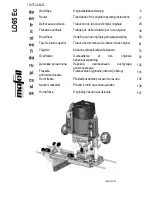
SYSLOG
U
SER
G
UIDE
299
SYSLOG
L
OGGING FUNCTION CONFIGURATION
Imola allows to collect messages showing the status of the system as events occur.
The collect of system messages by the Syslog service, can be executed either on a local server or on
a remote one. In order to configure a local log service the following command is used:
set log local
In order to configure a remote log service the following command is used:
set log remote <remote-ipaddr>
where
<remote-ipaddr>
is the IP address of the remote log server.
To specify which IP source should be used to send Syslog messages to the remote server, use the
command:
set log source <local-ip>
or
set log source loopback
in order to use the loopback address.
In order to avoid that the file expands excessively, it is possible to specify a maximum number of
lines with the following command:
set log max-lines <value>
It is also possible to specify the log level with the command:
set log level <value>
Log levels (from
1
to
4
) allow to display system messages with different details:
LOG
DESCRIPTION
level
1
Applications
level
2
Applications, users logon authentication, log of IP packets in transit and filtered by
acl
,
dest-
nat
,
source-nat
rules.
level
3
Applications, users logon authentication, log of IP packets in transit and filtered by
access-
list
,
dest-nat
,
source-nat
rules, Telnet and FTP accesses, dialer ISDN activation
level
4
Applications, users logon authentication, log of IP packets in transit and filtered by
access-
list
,
dest-nat
,
source-nat
rules, Telnet and FTP accesses, dialer ISDN activation with debug
messages, ADSL link activation
It is possible to collect log messages coming from a single message category with the command:
set log facility <facility>
Possible values of
<facility>
are:
local0
local1 local2 local3
local4 local5 local6 local7
















































